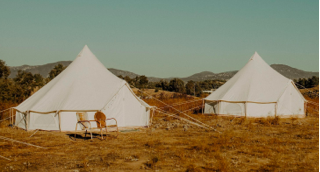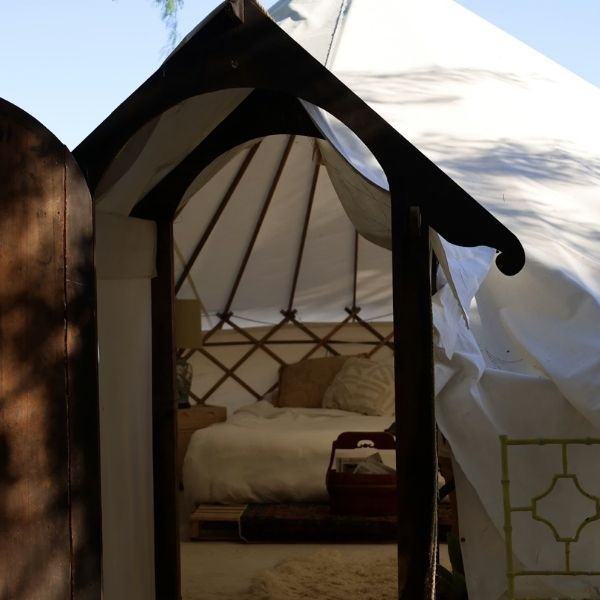ENVÍO GRATIS + SIN IMPUESTOS SOBRE LAS VENTAS
Menú
-
- Comercio
- Tiendas de campaña
- Carpas tipo campana
- Canvas Tents
- Wall Tents
- Carpas para festivales
- Tiendas de caza
- Tiendas de yurta
- Tienda de observación de estrellas
- Regalos para acampar
- Tiendas terrestres
- Tienda de campaña para 4 personas
- Tienda de campaña para 6 personas
- Equipo de campamento
- Shade Canopy Tents
- Family Tent
- Servicios
- Acerca de
- Contact Us
- Reviews
-
- Entrar

Free Shipping

Pay No Sales Tax
30-Month Warranty
ENVÍO GRATIS + SIN IMPUESTOS SOBRE LAS VENTAS
Tiendas de campaña
Acerca de
Comercio


La lista de LiT
Ideas + recursos para acampar y glamping
Dispersed Camping Guide: Learn the Basics for Dispersed Campsites
5 lectura mínima
Ready to break out the camping tent but struggling to find a site? Dispersed camping might be the answer.
Dispersed camping, also known as primitive camping, is a great way to unplug and escape crowds, especially since it’s become harder and harder each year to book a campsite. Plus, not only do you avoid costly site bookings, but dispersed camping is often free or cheap. However, lacking campground amenities like toilets, showers, ever-flowing potable water from spigots, and even WiFi requires extra planning, preparation, and responsibility!
But if you’ve never tried it, we’ve put together this dispersed camping guide to teach you the basics and help steer you in the right direction.
What Is Dispersed Camping?
Dispersed camping is basically any camping (boondocking, wild camping, primitive camping) that is done outside of designated and/or developed campgrounds.
Many dispersed camping areas are public lands managed by the U.S. Forest Service (USFS) and the Bureau of Land Management (BLM), but as we already mentioned, they lack amenities. Instead, you *might* find forests with designated sites and fire rings, sometimes pit toilets or bear boxes, but not the extra creature comforts of camp showers, grills, or friendly camp hosts and bundled firewood at the ready.
Dispersed Camping 101: A Basic Guide for First-Time Campers

Dispersed camping comes with its rewards. But it also comes with its own set of challenges. Finding a dispersed campsite, learning the rules before you go, and planning to be self-sufficient out in the wilderness requires a bit more effort than your typical camping trip. Here is a basic guide to dispersed camping.
Find a Dispersed Camping Site: Apps, Sites, and Tools
Locate a dispersed campsite. Public lands (USFS and BLM) will offer the most dispersed camping options, but state game lands and forests have locations too. State parks, however, rarely offer much in terms of dispersed camping, but you can try your luck.
Apps and sites to help locate dispersed camping:
iOverlander is a community-driven app with user-submitted camping spots perfect for overlanders and campers.
The Dyrtapp offers a Pro version with a Free Camping Collection, but you can also use the Free version of the app to find Dispersed camping.
Boondocker’s Bibleis geared towards car campers, RVers, and overlanders. It’s a great source of info for dispersed camping beginners and even offers a campsite map that helps you distinguish and navigate public areas.
Gaia GPS is also really helpful in determining who manages the land and where its boundaries are (so you don’t accidentally trespass).
Hipcamp is a nice alternative for those who prefer having a few amenities and a host nearby for safety. Some Hipcamps could qualify as dispersed camping, giving you those quiet, primitive camping vibes. Although they usually cost a fee to help the host maintain the site and potential amenities (pit toilets and such).
Google Maps is a simple yet effective way to find dispersed camping and the access roads to get there. You scour the map for green patches (National Forests), but it’s tricky to locate BLM lands.
Learn the Rules: Local Regulations and Leave No Trace
Aside from following Leave No Trace principles (which you should do for every camping trip), learn the rules, regulations, and guidelines set by the local area or region. Understand and take note of what is allowed and restricted where you plan to be primitive camping.
Some common rules and regulations might be:
- 14-day limitat a single site
- Select a site 200-300 feetfrom water sources
- Stay on established roads and don’t drive off-road to find a site
- Obtaining a fire permit or woodcutting permit
- Avoid building a fire ringor having illegal campfires
- Proper food storage(especially in bear country)
The list above is a general idea of what to expect. If you’re unsure, get in touch with a ranger or even swing by their office to confirm the requirements and restrictions before you venture out. Rangers are enormously helpful and can provide great first-hand advice and suggestions on what to expect from the area, including road conditions.
Prepare for Primitive Camping: Self-Sufficiency and Safety

Dispersed camping is often more primitive than your average campground, so you must prepare. If you plan correctly, you can stay safe and self-sufficient, enjoying your time outdoors with minimal stress.
Here are a few preparation tips for dispersed camping:
- Bring plenty of water for cooking and staying hydrated (1 gallon per person daily, at least!)
- Pick a spot near a natural water source and bring a water filtration system
- Pack easy-to-cook freeze-dried meals and canned foods
- Limit perishable foods required to keep cold with ice or coolers
- Pack enough camp fuel for your camp stove
- Use biodegradable soap for cleaning cookware
- Choose a bathroom setup (cathole vs. camp toilet) and portable privacy tent if able
- Plan to pack out with trash bags (sealable to prevent odors!)
- Think off-grid powerwith a foldable solar panel, solar-powered gear, and power banks
- Choose a multi-tool or knife for basic repairs and food prep
- Bring a first aid kit, sunscreen, and bug repellent
- Bring navigation tools(compass, maps, GPS devices, etc) and a satellite phone or locator beacon
Every dispersed camping trip is different. The essential accessories for overlanders will look a lot different than backpackers who need to pack minimally and light. But ultimately, it pays to plan ahead and bring only the essentials!
Choosing a Dispersed Campsite
Once you arrive at your dispersed camping area, you’ll need to assess the surroundings and select a comfortable site. Sometimes dispersed camping areas offer existing campsites (designated by fire rings and tire tracks), but not always. However, this is where your LNT principles come into play, as you’ll want to minimize your impact and prevent ‘campsite creep.’
Select a dispersed campsite using the following tips:
- Stay on pre-existing roads and trails
- Find the most level ground, avoiding slopes that lead to water runoff
- Setup camp 200 feet away from water sources (but check the region’s requirements)
- Choose a site under a forest canopy for shade, but avoid being under broken or dead limbs
- Take notice of scat or signs of animals visiting the area
Final Thoughts
There’s much to learn about this camping style, especially regarding safety and self-sufficiency.
But if you enjoy the idea of dispersed camping, give it a try somewhere local first to get your bearings and discover if it’s right for you and your family. Sure, there might be a market to grab supplies right down the road, but settling into your campsite and being ready for anything builds confidence for a bigger, truly remote trip where you’re miles and miles away in your home away from home.
Related Resources

LA LISTA ILUMINADA 4 lectura mínima
5 Reasons Yurt Tents Are the Ultimate Backyard Guest House
Hosting overnight guests? Consider a spacious backyard yurt tent as a spare guest room. Since many fHosting for the holidays or inviting overnight guests? Here are 5 reasons why yurt tents create the ultimate backyard guest room for your visiting family and friends. Affordable reason for selecting a yurt style tent for more permanent backyard glamping.

LA LISTA ILUMINADA 2 lectura mínima
Ventas de tiendas de campaña del Black Friday hasta la Cyber Week
¿Está buscando ahorrar algo de dinero en la compra de una tienda de campaña de regalo para esa pers Blogs populares
-
2. Cómo iniciar un negocio de glamping
3. Cree una plataforma con plataforma tipo campana
4. Los mejores baños portátiles para acampar
5. Cómo montar y plegar una tienda de campaña
6. Las mejores estufas para tiendas de campaña: formas de calentar una tienda de lona
7. Ideas de regalos para acampar para personas que lo tienen todo
productos populares
Suscribir
Regístrese para recibir lo último en ventas, nuevos lanzamientos y consejos
CONVIÉRTETE EN UN INFORMATIVO
Periódicamente compartiremos contigo inspiración, lanzamientos de tiendas de campaña, ofertas especiales y notificaciones de eventos.

